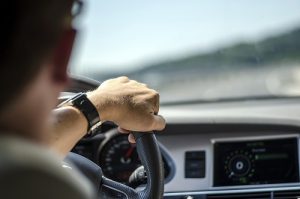
We’ve seen big changes in the way we view transportation recently–but what’s on the horizon?
Transportation is the lifeblood of a city; for a successful metropolis, having the infrastructure in place to support public or private transportation is an absolute necessity. It’s also a critical part of allowing for the transit of merchandise and is a massive part of what makes a functioning economy. Transportation is going through huge changes though, prompted by technological developments that are rapidly taking place. We have already seen some significant changes in transportation in just the past 5 years–look at services like Uber or Lyft, for example–but how will transportation continue to change in the near future?
Autonomous Vehicles
We have talked before about what smart cars may mean for transportation security, but autonomous hands-free and feet-free driving vehicles, such as Tesla’s “Autopilot” or GM’s “Super Cruise,” will be available sooner than you may think. Prices of these technologies have been cut dramatically from when they were first introduced, so while smart cars do offer security challenges that must be addressed, being able to utilize autonomous vehicles in the near future is still an exciting prospect.
Hyperloop Potential
The hyperloop is a proposed method of passenger and/or freight transportation that utilizes a vacuum sealed tube and a pod that would travel through it. If it functions as proposed, the Hyperloop would travel around 600mph, which is considerably faster than traditional trains. The technology has started to be developed by a variety of startup companies, including Hyperloop One who have had multiple successful test launches.
Electric Drivetrains
Electric drivetrains are more powerful, efficient, and compact than fossil-fueled alternatives. They also produce no local air emissions. This allows for a unique combination of performance and efficiency, which is a big deal for transportation. It also means huge changes to how cars may look in the future, requiring us to be even more vigilant in scanning the undercarriage of vehicles for safety purposes.
Collaborative Car Use
It has become typical for millennials to purchase far fewer road vehicles than older generations. This has led to collaborative car use, not only through ridesharing services like Uber or Lyft, but also vehicle sharing services like Zipcar. Services like these are great for getting people around, however it does make identifying the driver of a vehicle more difficult than ever. Luckily, technology has already developed in response, and there are things like the DriverCam to help keep drivers identifiable and responsible.
Put Your Trust in Gatekeeper Security
Gatekeeper Security’s suite of intelligent optical technologies provides security personnel with the tool to detect today’s threats. Our systems help those in the energy, transportation, commercial, and government sectors protect their people and their valuables by detecting threats in time to take action. From automatic under vehicle inspection systems, automatic license plate reader systems, to on the move automatic vehicle occupant identifier, we offer full 360-degree vehicle scanning to ensure any threat is found. Throughout 30 countries around the globe, Gatekeeper Security’s technology is trusted to help protect critical infrastructure. Follow us on Facebook, Google+, and LinkedIn for updates about our technology and company.
